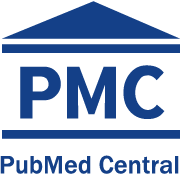Factors associated with the non-utilization of healthcare services among venezuelan migrants in Peru
DOI:
https://doi.org/10.17843/rpmesp.2019.360.4654Keywords:
Transients and Migrants, Health Facilities, Health Services Accessibility, Venezuela, PeruAbstract
Objective.To estimate the prevalence and determine the factors associated with the non-utilization of healthcare facilities (NUHCF) among adult Venezuelan migrants in Peru. Materials and Methods. An analytical cross-sectional study of the "Survey of the Venezuelan Population Residing in Peru" 2018. We calculated the proportion of immigrants with NUHCF (immigrants with some symptom or malaise, illness, relapse of chronic illness, accident and discomfort, or other problem such as depression, fear, anger, anxiety, and stress, and who did not consider that it was serious or that they needed to visit a healthcare facility). Raw and adjusted (PRa) prevalence ratios (PR) for presenting NUHCF were estimated using generalized linear models. Results. The study included 2,144 Venezuelan migrants: 57.2% presented NUHCF, reporting reasons such as: not having money (64.5%), lack of health insurance (24.3%), self-medication (12.8%), and not having time (8.4%). Living in Arequipa (PRa: 0.69; 95% CI: 0.57-0.83) or Trujillo (PRa: 0.87; 95% CI: 0.76-0.99), suffering from a chronic disease (PRa: 0.83; 95% CI: 0.71-0.97), and being enrolled in the Seguro Integral de Salud (SIS) insurance (PRa: 0.28; 95% CI: 0.13-0.61) was associated with a lower probability of NUHCF. Belonging to an age group under 60 years was associated with a higher probability of NUHCF. Conclusions. One out of two Venezuelan migrants in Peru presents NUHCF. Having SIS increases the likelihood of Venezuelan migrants in Peruvian territory seeking medical attention. Increasing public health insurance for this population, which is currently low, could increase the utilization of health services.Downloads
Download data is not yet available.
Downloads
Published
2019-11-06
Issue
Section
Original Article
License
Copyright (c) 2019 Revista Peruana de Medicina Experimental y Salud Pública

This work is licensed under a Creative Commons Attribution 4.0 International License.
How to Cite
1.
Hernández-Vásquez A, Vargas-Fernández R, Rojas-Roque C, Bendezu-Quispe G. Factors associated with the non-utilization of healthcare services among venezuelan migrants in Peru. Rev Peru Med Exp Salud Publica [Internet]. 2019 Nov. 6 [cited 2025 May 13];36(4):583-91. Available from: https://rpmesp.ins.gob.pe/index.php/rpmesp/article/view/4654




























